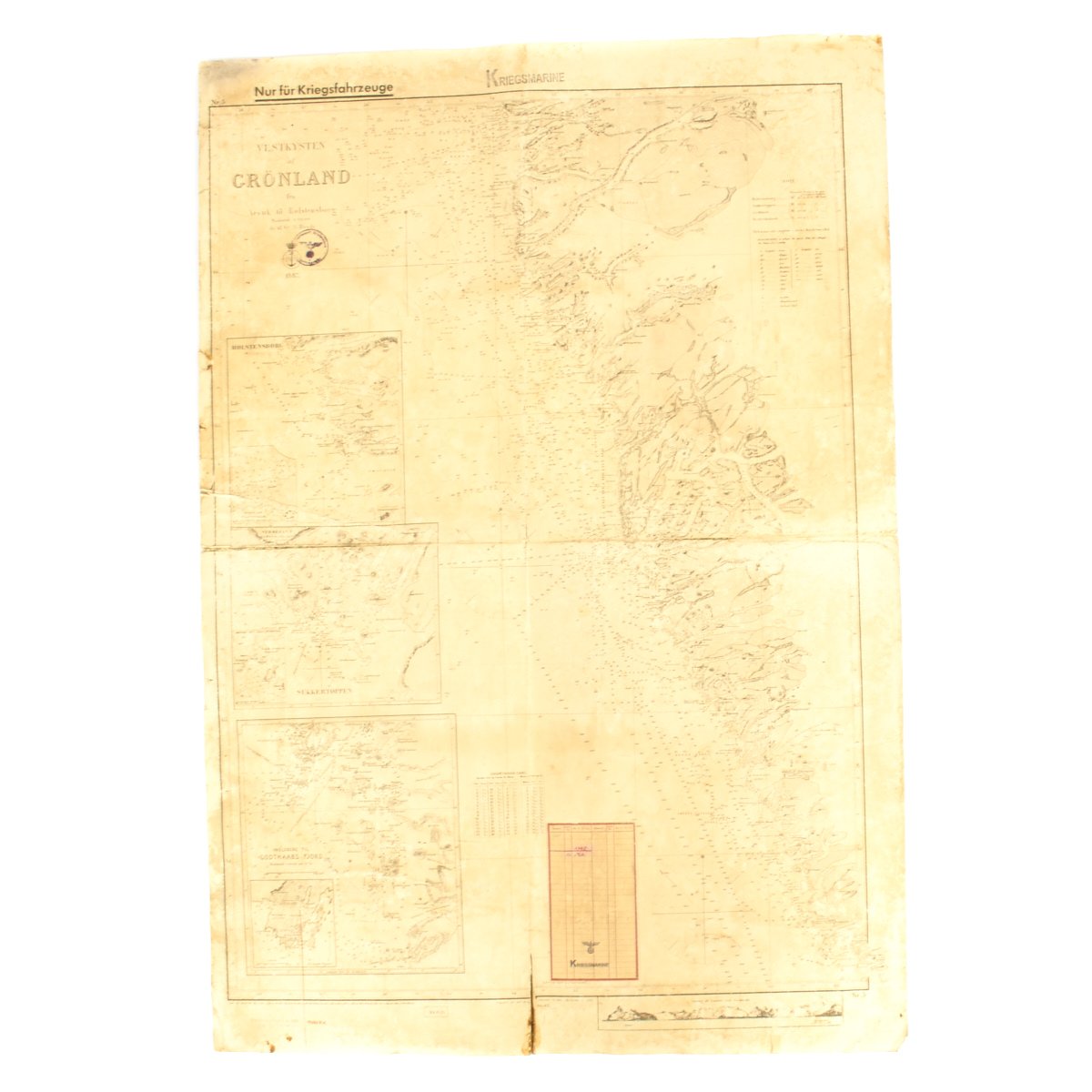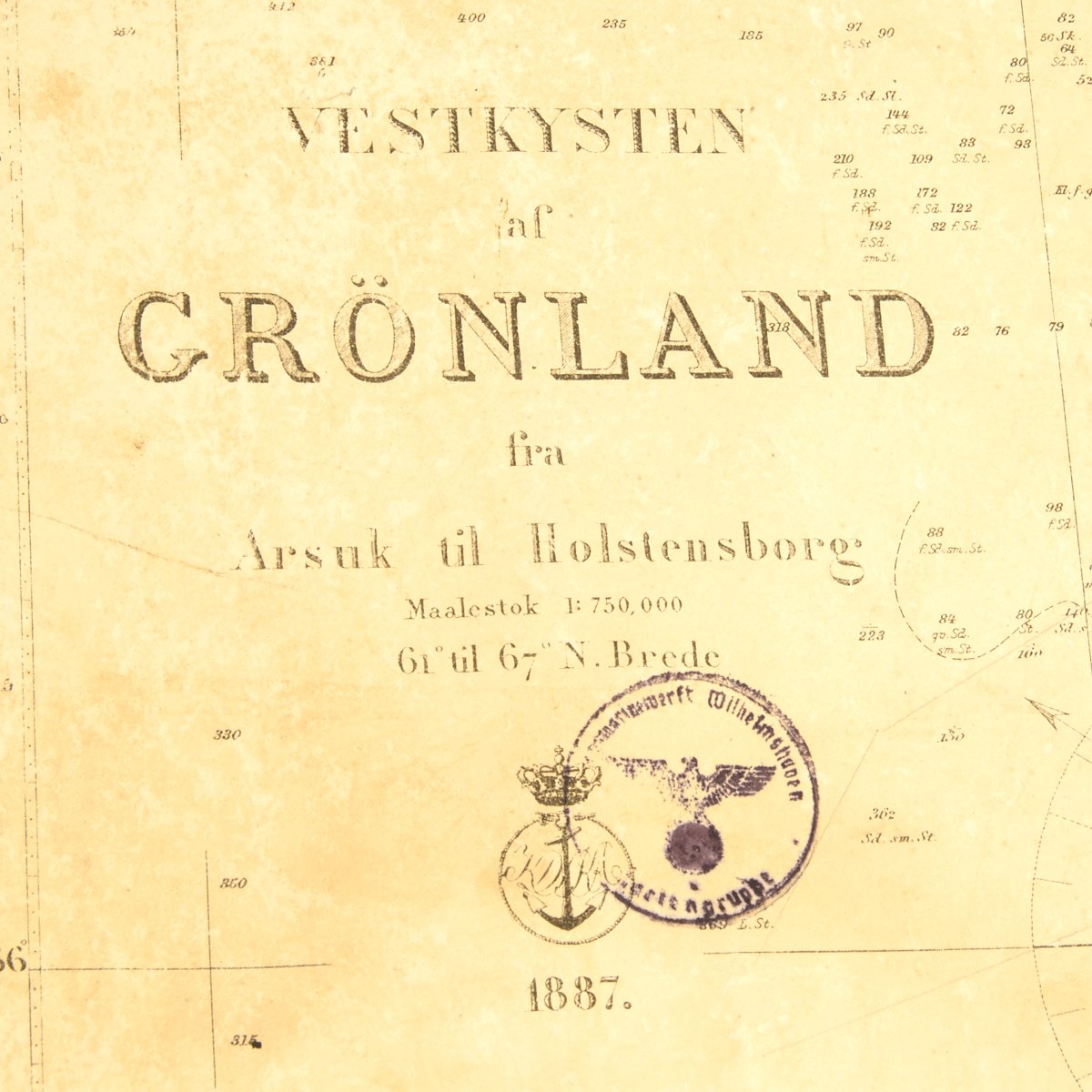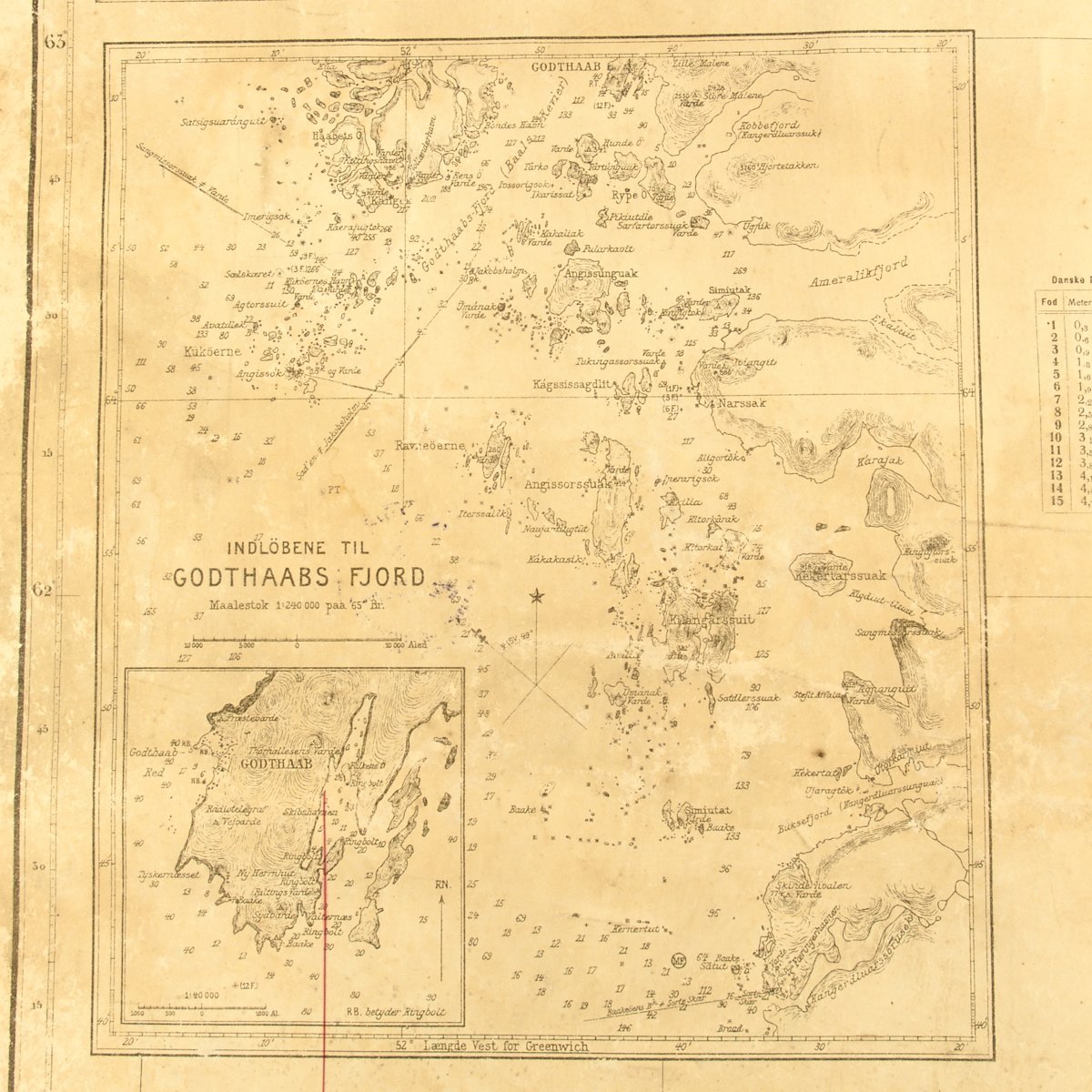Original German WWII 1942 Kriegsmarine U-Boat Map of Greenland Original Items
$ 395,00 $ 118,50
Original Item: Only One Available. This is a good condition heavy paper on linen map used by German U-Boat captains during WW2!
This fantastic map is marked Kriegsmarine across the top and in multiple other locations. It is a single sided map constructed of heavy paper mounted on a linen backing and is marked:
The map is in very good condition with clear printing and some minor tears with minimal defects, it measures approximately 38″ x 26″. It is dated 1942 with an issue ink stamp of 1942.
German weather stations
Beginning in August 1942, the Germans established four clandestine weather stations on the east coast. The first expedition on Sabine Island was detected in the spring, but was withdrawn successfully before it was attacked. The fall 1943 expedition at Shannon Island also operated successfully over the winter and spring and was withdrawn by air. Two expeditions in October 1944 were seized by the Coast Guard before they could get established.
The German weather station Holzauge at Hansa Bay on the northeast coast of Sabine Island was discovered by a team from the Sledge Patrol on 11 March 1943. The Germans realized they had been discovered, and gave chase to the team, who had to abandon their equipment (including their dog teams) and retreat to the station at Eskimonæs, to warn Ib Poulsen, the Sledge Patrol commander.
Poulsen reported the German base to the Greenland government on 13 March 1943, and asked for automatic weapons and further orders. Governor Brun officially designated the patrol the “Army of Greenland” and named Poulsen its captain, effective 15 March.
The Germans attacked Eskimonaes on 23 March. Before help could arrive they seized and burned the station. Though unhurt, the entire Sledge Patrol contingent based there was forced to make a 400-mile trek to the station at Ella Island without sleds, food, or equipment. On their way back to Sabine, the Germans ambushed a three-man patrol at Sandodden, killing the leader, Corporal Eli Knudsen.
In late-April, Lieutenant Hermann Ritter, the officer in command of the German detachment , was taken prisoner by the Sledge Patrol and brought to the Americans after a long journey to Scoresby Sound.
The German base on Sabine was bombed by USAAF bombers from Iceland. It was then seized by a Coast Guard landing party, but all German personnel save one person had already been evacuated by a Dornier Do 26.[16] Apart from fire exchanged between German aircraft and U.S. ships, this was the only offensive air attack on the Greenland mainland. An American air force formation attacked the station on 14 May to make sure it could be of no use to the Germans.
Two more skirmishes occurred between the Sledge Patrol and the Germans, leaving the Greenland force with two more dead and four wounded by the end of conflict in 1944.
The last German weather station, Edelweiss II, was captured by U.S. Army forces and its crew taken prisoner on 4 October 1944. The American troops landed from the icebreaker USCGC Eastwind, which later transferred the prisoners to USCGC Storis. The German transport ship Externsteine, which was resupplying the station, was seized by Eastwind, renamed Eastbreeze and commissioned in the United States Coast Guard.
Greenland played an important role in North Atlantic air traffic during the war, but the island’s role as a major base for anti-submarine warfare assets was hampered by adverse weather, winter darkness, and difficult logistics. For a long period, a flight of six PBY Catalinas of VP-6(CG) was maintained at Bluie West One, carrying out a great variety of missions.
Fast Shipping with Professional Packaging
Thanks to our longstanding association with UPS FedEx DHL, and other major international carriers, we are able to provide a range of shipping options. Our warehouse staff is expertly trained and will wrap your products according to our exact and precise specifications. Prior to shipping, your goods will be thoroughly examined and securely secured. We ship to thousands clients each day across multiple countries. This shows how we're dedicated to be the largest retailer on the internet. Warehouses and distribution centres can be located throughout Europe as well as the USA.
Note: Orders with more than one item will be assigned a processing date depending on the item.
Before shipping before shipping, we'll conduct a thorough inspection of the items you have ordered. Today, the majority of orders will be delivered within 48 hours. The delivery time will be between 3-7 days.
Returns
The stock is dynamic and we cannot completely manage it because multiple stakeholders are involved, including our factory and warehouse. So the actual stock may alter at any time. It's possible that you may not receive your order once the order has been made.
Our policy is valid for a period of 30 days. If you don't receive the product within 30 days, we are not able to issue a refund or an exchange.
You can only return an item if it is unused and in the same state as the day you received it. You must have the item in its original packaging.
Related products
Uncategorized
Uncategorized
Armored Burgonet Helmet & Polearm from Scottish Castle Leith Hall Circa 1700 Original Items
Uncategorized
Uncategorized
Band of Brothers ORIGINAL GERMAN WWII Le. F.H. 18 10.5cm ARTILLERY PIECE Original Items
Uncategorized
Uncategorized
Uncategorized
Australian WWII Owen MK1 Machine Carbine SMG Custom Fabricated Replica with Sling Original Items
Uncategorized
Uncategorized
Uncategorized
Uncategorized
Angolan Rebel 1970s era 60mm Inert Display Mortar from Angolan Civil War Original Items
Uncategorized
Uncategorized
Armoured Fighting Vehicles of the World: AFVs of World War One (Hardcover Book) New Made Items
Uncategorized
Uncategorized
Uncategorized
Uncategorized
Uncategorized
Uncategorized
Uncategorized












































































